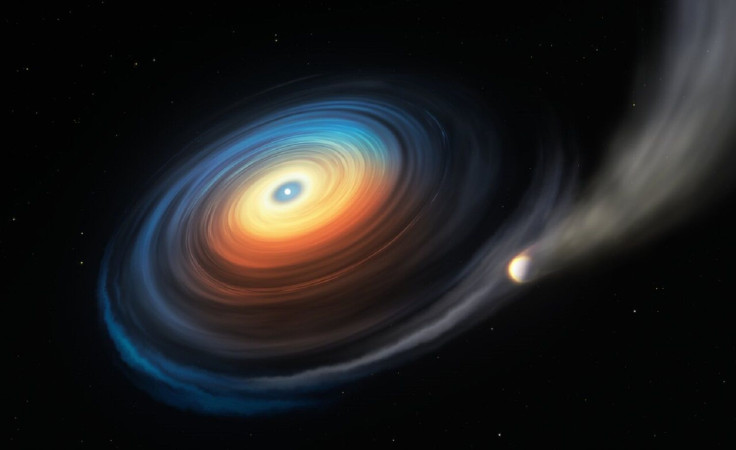Scientists Find First Evidence Of White Dwarf 'Evaporating' Nearby Planet

Researchers of a new study published in Nature had observed about 7,000 white dwarf stars when they observed that white dwarf WDJ0914+1914 strangely had traces of elements around it in amounts that had never been observed before.
Analysis of the star using the X-shooter instrument on the European Southern Observatory's (ESO) Very Large Telescope confirmed the presence of oxygen, hydrogen and sulphur around the white dwarf, and researchers further found that the elements were swirling into the white dwarf and not coming from it.
As it happens, the amounts of oxygen, hydrogen and sulphur they discovered are actually consistent with those in the deep atmospheric layers of massive icy planets such as our own Neptune and Uranus.
“It took a few weeks of very hard thinking to figure out that the only way to make such a disc is the evaporation of a giant planet,” study co-author Matthias Shreiber of the University of Valparaiso in Chile said.
Stripped Away
Researchers estimate that the white dwarf has a temperature of 28,000 degrees Celsius, five times hotter than our Sun, while the icy planet orbiting is at least twice the sun's size and orbits so close to the white dwarf that it completes its way around it in just 10 days.
As the star's extreme ultraviolet radiation strips away the planet's atmosphere, most of the gas escapes but some if it is left in orbit and pulled into a swirling disc around the sun at a rate of 3,000 tons per second.
If not for the disc, the Neptune-like planet would have been hidden from sight.
Surviving Planets
Stars, just like our sun, burn hydrogen cores for most of their lives. Once they run out of fuel, they turn into red giants up to hundreds of times larger than normal, engulfing its nearby planets. Eventually, the red giant will shed its outer layers and leave only its core, a white dwarf.
Once a white dwarf remains, it can still host the surviving planets. However, it is only now that researchers actually found evidence of a surviving planet around a white dwarf. In this case, the planet appears to have moved closer to its sun some time after it turned into a white dwarf, possibly due to gravitational interactions with other planets. As such, researchers say it is possible that there are also other planets that survived the sun's red giant.
Our Solar System's Future
In some ways, the study sheds light into what might happen to our own solar system in the distant future.
When our sun turns into a red giant in about 5 billion years, Mercury, Venus and Earth will likely be engulfed. However, based on the results of study, it is possible that once our sun sheds its outer layers and turns into a white dwarf, it could still host the other planets that survived the red giant phase.
“Until recently, very few astronomers paused to ponder the fate of planets orbiting dying stars. This discovery of a planet orbiting closely around a burnt-out stellar core forcefully demonstrates that the Universe is time and again challenging our minds to step beyond our established ideas,” study lead Boris Gänsicke of the University of Warwick said.
© Copyright IBTimes 2025. All rights reserved.






















